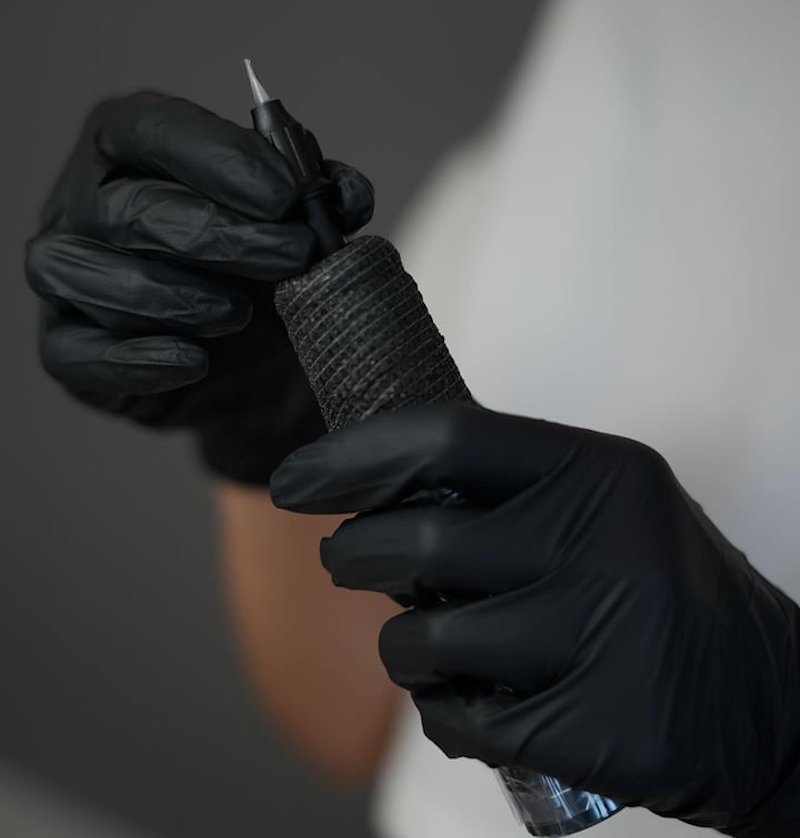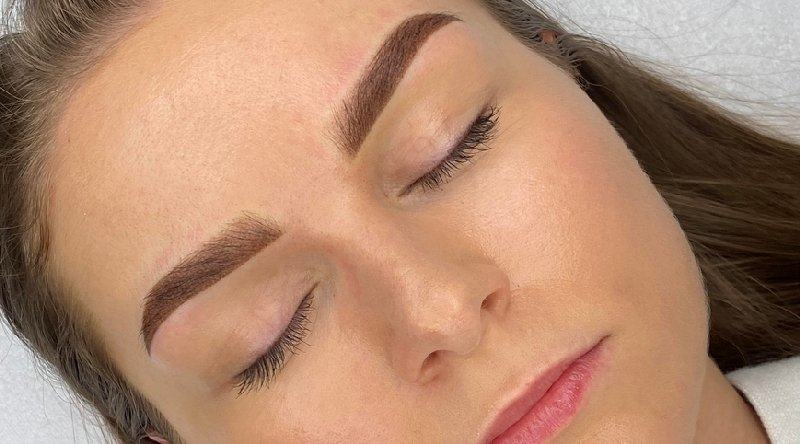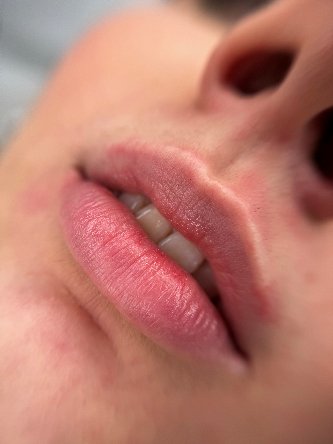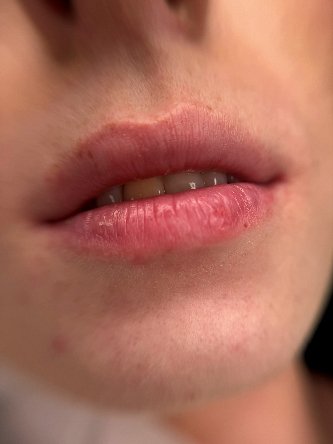PMU Makeup
Permanent
Professional Eyebrow and Lip Treatments
Permanent makeup in my aesthetic is supposed to naturally emphasize the client's beauty, it can be more or less saturated but not exaggerated and individually matched in color and shape.
Call and find out more




Details





After
Acceptance
SOFT
OMBRE
BROWS
Permanent eyebrows
I wanted to create a place that focused solely on eyebrow styling and educate clients on how to care for their eyebrows at home, because at that time there was no such place on the map of Katowice.

Additional Information
48 hours before the procedure
• do not consume alcohol or drugs
• do not take painkillers or blood thinners (aspirin)
• on the day of the procedure do not drink coffee or energy drinks
Following the pre-treatment recommendations is very important in terms of pigment absorption by the skin and healing, and also affects the quality of the treatment throughout the pigmentation.
What is eyebrow pigmentation?
Current techniques rely on superficial pigmentation. What does this mean? The pigment is injected into the skin via a cartridge into the upper layers of the DERMIS.
What does this type of work give us? First of all, we do not create the effect of a TATTOO, i.e. dark and strong eyebrows for many years, which many women fear. Delicate work of the hand and work with the tip of the needle allow us to obtain natural effects, more or less saturated, depending on the choice of pigment and type, which lasts for 1.5-2 years.
Before the procedure, you must complete the necessary documents, such as a detailed pre-procedure interview regarding your health condition to exclude any contraindications, consent to the procedure, and consent to the processing of personal data.
Then I answer any questions that may arise and then we proceed to the first stage of the procedure – the preliminary drawing. After its acceptance, I choose the pigment colour to match the client's expectations of the final effect. The permanent make-up procedure does not hurt, you may only feel slight discomfort. Remember that the final effect of the first pigmentation will only be visible after a few weeks.
Immediately after the procedure, the eyebrows will be dark and wider (due to the technique used). After a few days, delicate scabs will start to fall off, which absolutely must not be torn off. They must fall off on their own. The color underneath will be lighter and the shape of the eyebrows will be narrower.
Detailed post-treatment recommendations are provided to each client when filling out the documents. All tools used for pigmentation are disposable, so the whole process is carried out in safe and sterile conditions. I work on the highest quality products to offer the highest quality, including hybrid pigments.
• Diabetes (advanced and unregulated)
• High blood pressure
• Pregnancy and breastfeeding (wait 3 months after cessation of lactation)
• Psoriasis, atopic or seborrheic dermatitis, lupus erythematosus, eczema
• Skin changes in the pigmentation area
• Active purulent acne in the pigmented area
• Active herpes (you must wait at least 2 weeks after it has gone away)
• Hemophilia
• Chemotherapy, radiotherapy
• Eye diseases (cataracts, glaucoma)
• Cancer during treatment or after treatment – must pass
• Acute infections, colds, high temperature
• Antibiotics (2 weeks must pass after stopping taking the medication)
• Root canal treatment (dental anesthesia) must be performed at least 10 days after its administration
• Tendency to form keloids and coleoids
• Fresh scars in the pigmented area
• Ache may be caused by fungal superinfection
• Rheumatoid arthritis
• Taking anti-acne medications, e.g. vitamin A derivatives, retinoids, isotretinoin, tetracycline (you should wait 6 months after finishing the treatment, as pigmentation may cause scarring) and steroids (you should also wait 6 months, as the pigment may discolour and settle incorrectly in the skin)
• Use of conditioner that supports hair growth in the pigmented area
• Unregulated thyroid disease
• Heart disease
• Severe mental disorders
• Taking blood-thinning medications (aspirin, paracetamol, vitamin E and others)
• Taking antifungal medications
• Taking bisphosphonates (osteoporosis)
• Botox treatment – pigmentation can be performed one month after its administration
• Needle mesotherapy – a 10-day break should be maintained
• Heavy tan or sunburn
• Drinking herbs, inhaling or taking herbal tablets from nettle, rockrose, St. John's wort, chamomile (you should wait 1 month after stopping taking them). Rockrose prevents the pigment from settling in the skin, while St. John's wort, chamomile or calendula may cause discoloration of the skin.
• HIV, AIDS
• Pigment allergy
Eyebrow care after the procedure is extremely important and has a significant impact on the final pigmentation result.
For the first 24 hours, you should wash your eyebrows with boiled water moistened with a cotton pad very gently, and then dry them with a dry cotton pad. For the next few days, the eyebrows must be dry and do not wet them with anything, not even water.
Around the 4th day, thin scabs (pellicles) will form on the skin surface, which will continue to appear over the next few days. You MUST NOT scratch the scabs, mechanical damage can lead to scarring. On the 4th day from pigmentation, start using Bepanthen ointment and apply it 1-2 times a day with a stick in a VERY THIN LAYER until the scabs have completely peeled off (up to around the 10th day from pigmentation).
During exfoliation, a difference in color between the scab and the effect where the scab fell off may be visible. This is a natural process. After complete exfoliation, the eyebrows will be pale, then the color will return. Before each application of the ointment, gently wash the eyebrows and dry them.
For 14 days after the procedure, YOU MUST NOT:
– immediately after the procedure, do not consume caffeine, energy drinks, blood thinners, blood pressure raisers, alcohol or narcotics (this may affect the healing effect)
– touch the pigmented area with your hands, scratch and tear off scabs
– eyebrows must be dry – they must not be washed or soaked in water or any other liquids
– do not apply make-up to the pigmented area and apply creams or other cosmetics, steroid ointments (avoid the eyebrows)
– do not wash your eyebrows with tonic or micellar fluid
– use the swimming pool, solarium, sauna and other spa treatments
– expose yourself to sunlight and use SPF50 cream after healing
– a few days after the procedure, you should not apply eyelashes (glue fumes) or dye your hair (paint fumes)
– immediately after pigmentation you must not consume substances that increase blood pressure and thin the blood (alcohol, caffeine, etc.) as well as drugs, strong medicines, herbs – this may affect the final result
FAILURE TO FOLLOW THE ABOVE GUIDELINES MAY RESULT IN DISCOLORATION, DISCOLORATION OF THE PIGMENT OR ITS REFUSAL.
Permanent makeup may affect the results of magnetic resonance imaging – it may be important in diagnostics.





Check the prices of individual treatments
SATIN
LIPS
Thanks to the wide range of colors, you can obtain the most desirable mixtures in shades of nude, shades of pink, or stronger juicy lips. For a very natural effect, the color can be matched to the shade of lip red to even out the color.
The main advantages of lip pigmentation are the reconstruction of the redness of the lips, optical enlargement of the lips by filling them with color, emphasizing the shape, neutralizing discoloration and evening out slight asymmetry.

Additional Information
• 3 days before the procedure take Hascovir 4×200 mg
• do not perform any exfoliating facial treatments for 14 days prior to the procedure
• drink plenty of water
• moisturize your lips thoroughly (about 7 days before the procedure)
• 3 days before the procedure, perform a lip peeling
• on the day of the procedure you should not drink coffee or energy drinks
• do not take painkillers or blood thinners (aspirin) for 48 hours before the procedure48 hours before the procedure
What does the procedure involve?
Lip pigmentation involves introducing pigment using a cartridge into the papillary layer of the skin, so we do not create a tattoo, the effect is visible for about 2 years. During the procedure, only the red of the lips is pigmented, which has no hair or pores.
We start the visit by filling out the necessary documents, including a detailed health interview to exclude any contraindications. Then I answer any questions and make a preliminary drawing of the lips – the so-called reverse drawing. The reverse drawing means determining the shape by marking it from the contour, with a concealer, leaving the pigmentation zone free. After its acceptance and selection of the pigment according to the client's expectations, I start the pigmentation, which lasts about 1.5 hours.
The procedure is practically painless, it may be more noticeable only in the middle of the lips under the cupid's bow. The final pigmentation effect will be visible after 5 weeks.
Immediately after the procedure, the color of the lips will be intense. Around the second day, they will start to peel and you absolutely must not pick the cuticles, they must fall off on their own. The color underneath will be lighter by about 30/40%.
Immediately after the procedure, the eyebrows will be dark and wider (due to the technique used). After a few days, delicate scabs will start to fall off, which absolutely must not be torn off. They must fall off on their own. The color underneath will be lighter and the shape of the eyebrows will be narrower.
Detailed post-treatment recommendations are provided to each client when filling out the documents. All tools used for pigmentation are disposable, so the whole process is carried out in safe and sterile conditions. I work on the highest quality products to offer the highest quality, including hybrid pigments.
• allergy to the components of pigments, preparations, products/accessories used during the treatment - allergy to a relaxing preparation with an anesthetic effect, used in some cases;
• skin lesions in the area undergoing treatment (acne, fungal lesions, lichen,
• cutaneous porphyria (purulent acne, purulent, allergic or fungal conditions in the areas undergoing treatment, hemangiomas, lichen, papillomas, breaks in the continuity of the epidermis, burns
• pregnancy and breastfeeding
• cancer, chemotherapy, radiotherapy
• viral and bacterial infections
• inflammation
• active rosacea
• active psoriasis in the treatment area
• tendency to keloids and scarring
• active atopic and seborrheic dermatitis in the treatment area
• unstable diabetes
• haemophilia
• epilepsy
• constant taking of anti-inflammatory or anticoagulant medications (to be stopped 7 days before the procedure after consulting a doctor)
• use of corticosteroids (you should wait 3 months after finishing treatment)
• use of retinoids and steroids (you should wait 6 months after finishing the treatment)
• taking antibiotics (you must wait 30 days after finishing treatment)
• systemic lupus erythematosus, scleroderma
• rheumatoid and psoriatic arthritis
• systemic vasculitis
• colitis
• Crohn's disease
• myasthenia gravis
• sarcoidosis
• heart defects (valves, arrhythmias)
• aneurysms
• multiple sclerosis
• SMA
• cystic fibrosis
• HIV, AIDS
• viral hepatitis
• nervous hyperactivity
• planning dental treatment (should be planned 14 days after lip pigmentation)
• dental anesthesia (you must wait 14 days after its administration)
• cold sore (you must wait 30 days after it has gone away)
• intensive tanning
• exfoliation treatments in the treatment area (a 30-day break should be maintained between the treatments)
• cosmetic surgery (a 3-6 month break should be maintained depending on the medications taken)
• PDO threads, facial volumetry, HIFU (30 days interval should be maintained)
• ablation laser (6 month interval should be maintained)
After having permanent lip makeup done, absolute hygiene is required; the area undergoing pigmentation should not be touched, rubbed or scratched to avoid infection.
Following post-treatment recommendations is very important and will affect the healing effect:
– special hygiene of the pigmented area should be maintained - for 6 days after the procedure, drink through a straw
– disinfect your mouth with an antiseptic after each meal
– until the cuticles are enumerated, do not open your mouth wide and do not open your mouth
– do not use pomade, lip gloss, lip liner or other lip makeup products
– moisturize your lips with butter
– in case of a possibility of herpes, it is recommended not to take Hascovir (4x200mg) for 3 days after the procedure (and 3 days before)
– do not eat sour, spicy foods or hot drinks for 14 days after the procedure
– for a period of 14 days, do not soak, wash with soap, gel or other make-up removers, agents containing alcohol and do not exfoliate your lips – to wash the area around your lips, use a cotton pad moistened with boiled water
- do not smoke cigarettes
– do not perform microneedle mesotherapy or other exfoliating and epidermis rebuilding treatments for 3 weeks (including acids and chemical peels)
– do not come into contact with botulinum toxin for 3 weeks
– no sunbathing for 6 weeks and then use a cream with SPF50
– use of sauna and swimming pool for 2 weeks
Photos






